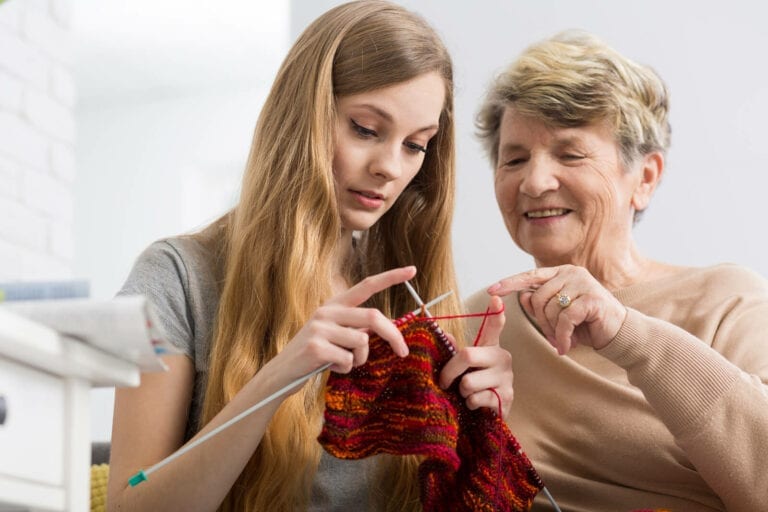As family and home care providers, effective communication plays a pivotal role in nurturing meaningful relationships and delivering high-quality care. Communication is more than just exchanging words; it involves active listening, empathy, and understanding. In this comprehensive guide, we will explore a wide range of strategies that empower you to communicate effectively with your loved ones or clients, providing them with the best care possible.
Table of Contents
- The Importance of Effective Communication Strategies
- Creating a Supportive Communication Environment
- Effective Communication Strategies for Challenging Situations
- Tips for Effective Communication in Daily Caregiving
- Maintaining Communication with Healthcare Professionals
- Communicating with Diverse Family Members
- Conclusion
The Importance of Effective Communication Strategies
Effective communication strategies are the cornerstone of successful caregiving. When caregivers and family members communicate effectively, it leads to numerous benefits, including:
- Building Trust: Effective communication fosters trust and a sense of security between caregivers and care recipients.
- Enhancing Well-Being: Positive interactions contribute to improved emotional well-being and mental health for both caregivers and recipients.
- Reducing Misunderstandings: Clear communication minimizes the risk of misunderstandings that can lead to unnecessary stress and conflict.
- Empowering Decision Making: Good communication enables care recipients to express their preferences and actively participate in decision-making processes.
- Improving Quality of Care: When caregivers understand the needs and preferences of their care recipients, they can provide personalized and higher-quality care.
- Strengthening Relationships: Effective communication nurtures strong bonds between family members and care providers, creating a supportive network.
Creating a Supportive Communication Environment
To establish a supportive communication environment, consider the following strategies:
1. Active Listening Techniques
Listening actively is the foundation of effective communication. It involves giving your full attention to the speaker, maintaining eye contact, and providing verbal and non-verbal cues to show understanding and empathy.
2. Empathy and Compassion
Demonstrate empathy and compassion towards your loved ones or clients. Put yourself in their shoes, acknowledge their emotions, and offer reassurance. Show that you genuinely care about their well-being.
3. Non-Verbal Communication
Non-verbal cues, such as facial expressions, gestures, and touch, can convey powerful messages. Be mindful of your body language, as it can significantly impact the communication experience.
4. Encouraging Open Dialogue
Create an atmosphere where all family members or care providers feel comfortable expressing their thoughts and concerns. Encourage open dialogue to address any issues constructively.
5. Setting Communication Goals
Establish clear communication goals for caregiving situations. Identify the desired outcomes and work together to achieve them.
Effective Communication Strategies for Challenging Situations
Challenging situations may arise in caregiving. Adopt these strategies to navigate difficult conversations:
6. Managing Conflict with Grace
Conflict is natural, but handling it with grace is crucial. Focus on finding common ground, respecting differing opinions, and seeking compromise.
7. Dealing with Emotional Stress
Caregiving can be emotionally taxing. Communicate your feelings with a support network, seek professional help, and practice self-care.
8. Clear and Honest Communication
Be honest about your own limitations and communicate them clearly to the care recipient. This transparency fosters trust and mutual understanding.
9. Maintaining Boundaries
Establishing healthy boundaries is crucial for both caregivers and recipients. Respect each other’s space and limitations.
10. Handling End-of-Life Discussions
Addressing end-of-life issues can be difficult but necessary. Approach these conversations with sensitivity and compassion.
Tips for Effective Communication in Daily Caregiving
Ensure effective communication on a daily basis with these practical tips:
11. Establishing Routines
Routines provide structure and predictability, making communication more comfortable for all parties involved.
12. Active Involvement in Care
Involve care recipients in decision-making and care-related activities, empowering them to maintain a sense of independence.
13. Using Visual Aids
Visual aids, such as charts and calendars, can facilitate understanding and organization in caregiving routines.
14. Practicing Patience
Be patient when communicating with care recipients, especially in cases of memory loss or cognitive decline.
15. Celebrating Achievements
Acknowledge and celebrate milestones and achievements of care recipients, no matter how small they may seem.
Maintaining Communication with Healthcare Professionals
Coordinating with healthcare professionals is vital for comprehensive care. Follow these strategies:
16. Regular Updates
Keep healthcare professionals informed about changes in the care recipient’s condition and any concerns that may arise
17. Asking Questions
Don’t hesitate to ask questions to healthcare professionals to better understand medical conditions and treatment options.
18. Building a Collaborative Approach
Work collaboratively with healthcare professionals to develop the most effective care plan for the recipient.
19. Seeking Support and Guidance
If uncertain about certain aspects of care, seek support and guidance from healthcare professionals.
20. Advocating for the Care Recipient
Be a strong advocate for the care recipient’s needs and preferences during medical consultations.
Communicating with Diverse Family Members
In families with diverse members, consider the following strategies:
21. Embracing Cultural Sensitivity
Respect and embrace cultural differences within the family, incorporating them into caregiving practices.
22. Language Barriers
Address language barriers by using interpreters or translation services, ensuring everyone can participate in communication.
23. Recognizing Generational Differences
Generational differences may impact communication styles. Recognize and bridge these gaps for effective interactions.
24. Handling Family Conflicts
Family conflicts can arise during caregiving. Approach these conflicts with understanding and patience.
25. Promoting Unity and Harmony
Promote unity and harmony within the family, fostering a supportive environment for both caregivers and care recipients.
Conclusion
Effective communication strategies are vital for family and home care providers to foster harmonious relationships, navigate challenges, and provide exceptional care. By actively listening, showing empathy, and using practical communication techniques, caregivers can create a supportive environment that enhances the well-being of both themselves and their care recipients. Embrace cultural diversity, seek professional support, and communicate openly to ensure the best care experience for your loved ones.







